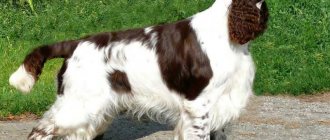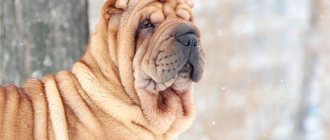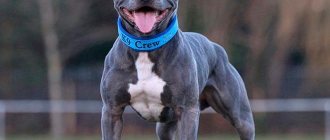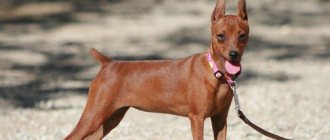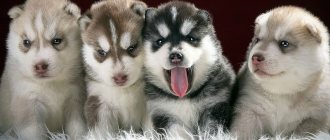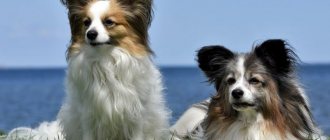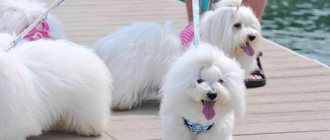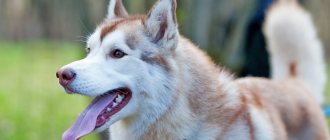How Chow Chows appeared and how they spread throughout Europe
The breed has been used by the Chinese for many centuries to perform various tasks: from home guarding to use as a sled dog. Unfortunately, even to this day, “rejected” representatives of this breed are used for food, although this practice dates back more than one thousand years.
The first mentions of dogs of this breed in Europe became known thanks to the travels of Marco Polo. In the 13th century, he visited China, from where he brought back many facts, discoveries and evidence. His notes dedicated specifically to the Chow Chow have been preserved, which is why it was believed that the breed was bred in the Middle Kingdom.
For a long time, these dogs were not of interest to Europeans, but already at the beginning of the 19th century, references to these exotic animals, which were brought from the British colonies, China, and India, began to appear. At first, the dog was considered a representative of a wild breed, and therefore at first individuals were kept in cages in zoos. But by the end of that century, a real boom began, and the popularity of chow-chow increased to unprecedented proportions. At the turn of the 19th and 20th centuries, the first club of admirers of this breed appeared.
Scientific background
According to Wikipedia, there is no scientific explanation for why the Chow Chow dog has a blue tongue. Although they have existed for a very long time, scientists still cannot determine the exact cause of this phenomenon. This dog breed is not the result of the work of breeders. This means that their tongue was blue from the origin of the breed and remains so to this day.
REFERENCE! A person can also have a blue tongue and it informs its owner about lung disease.
Confirmation that the Chow Chow breed is the oldest breed of dogs is confirmed by studies of their DNA. According to the most famous version, these dogs originally originated in China. The oldest clay figurines of these dogs were found there.
There are several versions of the explanation for the blue tongue of the Chow Chow:
One version says that the ancestors of the chow chow were very rare polar wolves. They became extinct many years ago, and left behind the chow chow's blue tongue.
The next version explains the chow chow's blue tongue due to their kinship with bears. Indeed, chow chows look very much like little bear cubs. Some even believe that the Chow Chow is a cross between a bear and a Samoyed.
In China there are two types of chow chow - regular and bastard. Bastards have more pointed heads and spotted tongues. Compared to standard Chow Chows, a spotted tongue is considered a defect, and a serious one at that. In China, bastards are used for food.
NOTE! Even though the Chinese have a law banning eating dog meat, they still do it.
But, of course, they did not breed these dogs just for food.
The Chinese used chow chows as shepherds, guards, and sled dogs. They even believed that the Chow Chow dog would save its owner from uninvited guests, and also from evil spirits. Therefore, they were bred by monks to protect holy places.
Another version says that the place where the chow chow appeared is in the Arctic. From there they went to Siberia, then to Mongolia, and from there on trade caravans to China, which is now considered their homeland. This version looks quite true, since animals know how to adapt to their environment. In the Arctic, the conditions are quite harsh and the oxygen content is minimal. Usually it is due to the lack of oxygen that the tongue turns blue. It is possible that mutations in the genes of these dogs occurred due to the constant lack of oxygen.
In Europe, they first heard about chow chow from the mouth of Marco Polo, who traveled to China in the 13th century. He described in great detail the appearance and character of these dogs. At what time the first chow chow appeared in Europe is still unknown. Presumably, this happened at the beginning of the 19th century, when they were brought to England.
In the London Zoo, the Chow Chow was kept under the name of a Chinese wild dog. Later it turned out that she was not wild at all, and then the chow chow puppy was presented to the Queen of Great Britain. After this, dogs of this breed began to quickly spread throughout the world.
Origin of breed and tongue color
It is known that all dogs have pink tongues, and only the Chow Chow can surprise us with a blue tongue. Why this happened and whether it was a consequence of some kind of special evolution or selection - this question worries experts, researchers, and dog handlers. There is a theory that the Chow Chow is nothing more than a cross between a dog and a small bear.
This idea is suggested by the dog’s external characteristics, in particular, its thick, tall fur. Bear tongues are black, while some wolves that lived in northern latitudes have blue tongues. Today the breed is considered completely extinct, but they could be the progenitors of the current Chow Chow.
Throughout the life of these wonderful dogs, the color of the tongue may change. The color range is quite varied: from light blue to rich black. It has been noticed that Chow Chows' tongues become lighter in color if they are very excited. But other factors also influence: from the weather to the physical and emotional state of the animal.
However, there are other versions that can at least somehow explain the origin of wolf dogs or bear dogs (as they are called in China). Interestingly, the breed may not be of Chinese origin at all. There is an opinion that their distant homeland was Mongolia, or even the territory of modern Siberia. The air above the Arctic Circle has a low oxygen content, and therefore purple and blue tongues may be evidence that they had to adapt to such survival conditions. This theory is supported by the fact that polar bears also have purple tongues.
The language of little chow chows
It is surprising that chow chow puppies are born with ordinary pink tongues. After about 20-30 days, the color of the tongue begins to gradually change. Every year the language becomes more vibrant.
REFERENCE! If you are planning to choose a Chow Chow puppy, be sure to pay attention to the color of its tongue. This usually happens in one and a half to two months. If at this time there are spots on the puppy's tongue or it is still not colored, it is better not to purchase such a puppy, most likely it is some kind of mixture. In addition, it is possible that this is not only a defect in the breed, but also some possible health problems.
Other interesting features of the breed
There are a large number of hypotheses, but none of them has yet been recognized as the only correct one from a scientific point of view. But the Chow Chows themselves have not become less popular because the color of their tongue is proof of their purebred. Interestingly, at birth it is pink during the first month of life, and only then changes towards a blue, and later blue hue.
That is why specialist breeders recommend paying attention to this criterion when buying a puppy. They are usually sold no earlier than 1.5-2 months of age, and if by this period pigment spots are visible on the tongue and it has not acquired a pronounced blue tint, it is better to refuse to purchase individuals from this litter.
There are recommendations and requirements of the National Club of this breed. In accordance with them, the oral mucosa of a chow chow should be black. But the lower surface of the tongue can have different shades of pigmentation, and this does not affect the value of the breed. The presence of one or more white or pink spots on the top or sides is not allowed.
Despite the color features of the tongue, Chow Chows have more developed intelligence than many other breeds. They are so independent and serious that they rarely play as adults. In addition, they are physically developed, and are also devoted and reliable assistants to a person in everyday life and during service.
Dog character
For many people who are not personally familiar with this breed, the character of the Chow Chow comes as an unpleasant surprise. These dogs are very stubborn, difficult to train and have a very strong sense of ownership. Toys, home, owner - they consider all this to be theirs and, if they are not properly educated, they can come into conflict with those who dare to challenge this.
In addition, they are extremely independent and do not like excessive affection . They behave very reservedly towards people and allow themselves to be petted only if they want it. Their relationship with children is even worse. Children's screams and unpredictable movements can be regarded as a threat, and noisy games can simply cause irritation.
However, this only applies to those cases when a dog meets a human child in adulthood. If the puppy grew up with the child from the very beginning, then, on the contrary, he will protect your child from any danger and happily participate in games.
From all that has been said, one may get the impression that this breed is unfriendly and even aggressive. But this is not true, it’s just that Chow Chows are very reserved and independent. They are well suited for people who work a lot and are often away from home. And despite the fact that they do not always follow commands, they are extremely loyal to their owner.
Interesting Facts
Over the several thousand years of the breed’s existence, many fascinating things have been associated with it:
- The dog with a blue tongue has a gorgeous mane and a capricious character, for which it is called Sunshi Quan in its homeland. “Shaggy lion” is how chow chow is translated from Chinese.
- The dogs lived with the animator Walt Disney, the king of rock and roll Elvis Presley, the psychiatrist Sigmund Freud and other famous personalities.
- This is the only dog with a blue tongue. According to legend, during the creation of the world, a curious chow chow licked the edge of the sky, and a blue mark remained on his tongue.
- According to one version, the name comes from the English word “chow-chow,” which was the name for special compartments on merchant ships that transported dogs of this breed across the ocean.
Education and care
If you don't want to send your tailed friend to a specialist for training, then get ready for the fact that training a Chow Chow can be quite difficult .
Many people mistakenly believe that these dogs are poor at learning and following commands due to their weak intelligence, but this is not true. Although they cannot be called the smartest breed, they are not distinguished by great stupidity either.
The reason for poor learning ability lies in the same stubbornness: chow chows often refuse to follow a command simply because they don’t want to. But if you start training early and give commands as a fun game, it can make your pet unusually obedient.
The same goes for his aloofness. If you introduce him to other animals and people from childhood, then in adulthood the dog will not show unreasonable aggression towards strangers and other people's dogs. Also, during training, you should not use painful punishments, as this will only worsen the animal’s character. It’s better to delicately show the puppy who’s boss from the very beginning. And in case of disobedience, lift him by the scruff of the neck and scold him out loud.
As for care, special attention should be paid to the Chow Chow's coat and adhere to some basic points:
- Chow Chows love to sleep at home, but exercise is a must for this breed. So try to run and play with your pet more outside,
- You need to wash your dog no more than once a month and use dry shampoo for this,
- It is better to comb the coat every day or at least twice a week. This way it will remain beautiful and not hang in clumps. In addition, the shedding period occurs twice a year, at which time the coat may need special attention.
- The chow chow's claws are soft and therefore grind well on the ground and asphalt. But if you do not have the opportunity to walk with your pet for a long time, then they may grow excessively. In this case, they should be trimmed about once a month,
- Clean your dog's eyes with a wet tissue every day. Her ears can be gently cleaned with a hygiene stick no more than once a week.
As for nutrition, this Chinese breed is suitable for both dry food and food made from natural products. The advantage of the food is that it already contains all the necessary minerals and vitamins. If you prepare food for your dog yourself, then be prepared for the fact that he may need mineral supplements .
Breed description, standards and appearance
The Chow Chow is a breed of dog with a blue tongue and a striking appearance. The luxurious mane and slightly frowning appearance make the dog look like an angry teddy bear.
The breed standard was first developed in 1895. Since then, the document has been corrected several times. The last time the standard was changed was in 1999, and it is now used to determine what a chow chow looks like:
Dimensions are an important characteristic of the breed. Dogs with blue tongues have clearly expressed sexual dimorphism, which is why girls are much lighter and shorter than boys.
Height, cmWeight, kg
| Male | 48-56 | 25-32 |
| Female | 46-51 | 20-27 |
When moving, the pet looks as if it is moving on stilts. A similar effect is achieved by having the hock joints point straight down.
On a note. The color name "cinnamon" means the color of cinnamon.
Varieties
There is no official division into types depending on size in the breed. But sometimes dwarf chow chows are born.
Externally, tiny dogs with a blue tongue resemble their standard counterparts and differ from them only in height and body weight.
Mini dogs barely reach 30 cm at the withers and weigh about 11 kg.
Color and coat type
Depending on the length of their coat, Chow Chow dogs are divided into short-haired and long-haired. The first ones are also called smooths from the English word smooth, translated as “smooth”.
Short-haired representatives of the breed are divided into 3 groups:
On a note. Smooths differ from their furry relatives only in the quality of their wool. Smooth-haired representatives of the breed tolerate heat more easily, but adapt less well to cold.
The current standard places strict requirements on coat color. It should be uniform and clean. A lighter shade is permitted on the back of the thighs and the lower part of the tail.
The following colors are allowed in Chow Chow dogs:
Stains of any color are not acceptable. Dogs with markings on their bodies are discarded.
On a note. Chow-chows of white and blue color are of particular value.
Nutrition
Regarding nutrition, there are no difficulties. You just need to adhere to the following rules:
1. Feed at the same time. 2. Give adults food 2 times a day, feed puppies starting 5-6 times, and gradually reduce the number of feedings as they grow older. 3. Provide balanced, high-quality nutrition and vitamin and mineral supplements. 4. The basis of nutrition is lean meat and low-fat dairy products. Cereals, vegetables and fruits are added to the base.
There is one important feature in the feeding rules that every owner of such a pet should know about. The fact is that representatives of the breed are predisposed to food allergies. Therefore, it is necessary to carefully prepare the diet, with the slightest changes in it, to monitor the reaction to the newly introduced product. If you notice a negative reaction or a deterioration in your pet’s well-being, immediately remove the new product from the diet.
